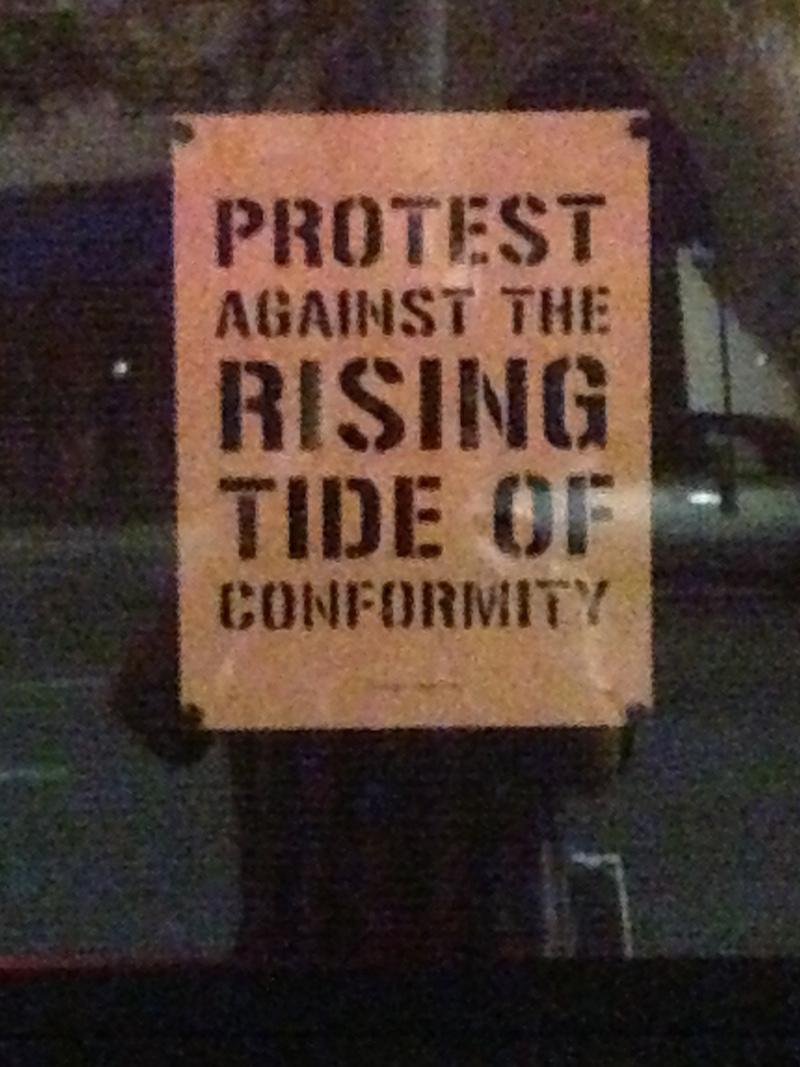This year’s annual National Art Education Association (NAEA) conference, held March 29–31 at the San Diego Convention Center, offered a lot of what everyone expects from this mother of all art-education conferences, which assembles more than three thousand art educators from all levels. There were hundreds of workshops during the conference’s three days to choose from—a tower of possibilities—from utilizing electronic portfolios to moving from STEM to STEAM. There were general-session keynote speeches from the likes of Phil Hansen and Deborah Butterfield. And there were tons of new supplies and resources available for review in the vendor hall, which was about the size of a football field and by far had the best lighting of any spot at the conference.
The venue’s Internet connections were spotty, which unfortunately is another thing this conference has become known for, no matter where it’s held. New national visual-arts standards were rolled out and printed on very large glossy posters. There were book signings, committee dinners, and the general reconnecting one does—when one’s lone chance each year is to steal a cocktail or coffee with colleagues who live around the country—at this annual orgy of workshops. But there were also some surprises—good and bad—and hopeful signs.
NAEA Asks Its Membership to Talk Back
One immense improvement to the conference was a large booth in the center of the vendor hall where members could give feedback not just on what was happening at the conference but also on the organization itself.
As my colleague Jessica Hamlin and I began writing our suggestions at the booth, I realized that quite a few colleagues already agreed with us: NAEA needs an image makeover. The professional journals with poorly designed and produced graphics (such as Art Education and Studies in Art Education) have got to go. The organization needs a literal rebranding with new, cutting-edge designers; from a look at the covers of the NAEA journals, it’s no wonder that art education is lumped together with the special/extra/non-core disciplines. An organization that promotes the teaching of visual art should not be graphically challenged.
Another popular point at the feedback booth was that NAEA should stop trying to legitimize art education through constant talk about how the arts can support the Common Core curriculum. We know the arts are essential, and we need to begin more conversations locally and nationally about the arts as core subjects that teach children to think critically and creatively. (For more on this, see my conversation with Jessica Hoffmann Davis from September 19 and 26, 2012.) Just because we’re mired in an educational climate of trying to quantify everything does not mean that NAEA cannot promote what the arts teach, and what standardized-test-based classes do not, in a more prominent way than Elliot Eisner quotes on refrigerator magnets. This is the time to push the conversation.
Contemporary Art and New Curriculum
Another positive sign at this year’s conference was the prominence of workshops that featured conversations about utilizing contemporary art in and outside of the classroom. Over the past few years there have been fewer workshops about how to creatively use pipe cleaners for projects and more about how contemporary art can be used to teach a variety of things. On Sunday, March 30, more than three hundred teachers warmly received the featured Art21 Educators in a session about their current work and the power of teaching with contemporary art. Other interesting sessions included “Let’s Play: From Play to Ideation,” “Gamifying Art History,” and “The Whole Educator: Remixing Studio Practice and Investigation in a Digital Age,” to name just a few.
Summary
Overall, this year’s NAEA conference was encouraging, but it still didn’t tap the potential for bringing together the many attending educators to talk about contemporary art education and how it can affect public education and policy; NAEA still hosts far too many workshops on subjects like integrating Van Gogh across the curriculum and reinventing the color wheel. Along with a rebranding of the organization, NAEA should reconsider the conference schedule, planning, and overall design. Often conference presenters must travel across the country without knowing how many people will be attending their workshops. If one’s presentation was scheduled for the final day, chances were high that only a handful of attendants appeared because most members left on Sunday, March 30. This is a case in which less could actually be more: workshops that are fewer in number but are more inviting, more powerful, and more interesting.
